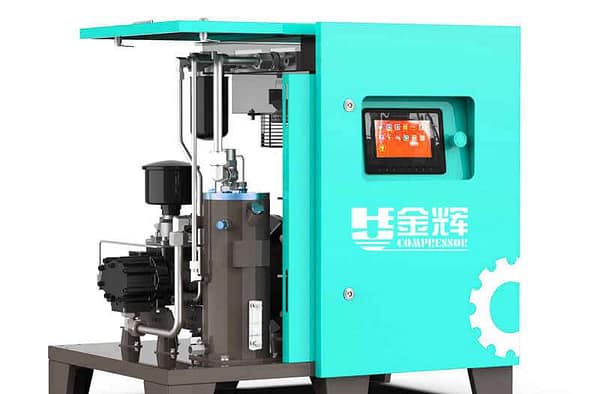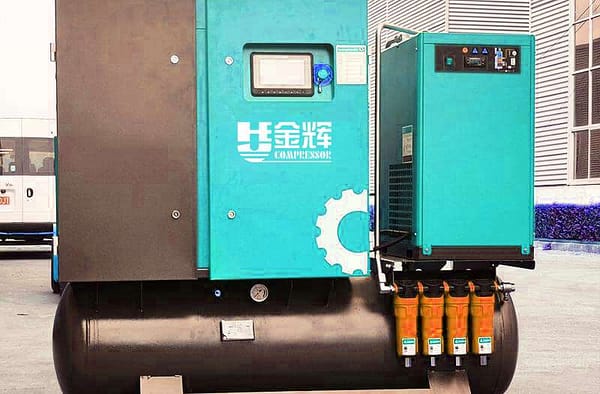
What is an air compressor
An air compressor, or air compressor, is a mechanical device used to compress a gas, usually air. It is capable of drawing in air at atmospheric pressure, and after mechanically raising the pressure, delivering the high-pressure air to the storage tank or pneumatic system. Air compressor is widely used in various industries and is one of the indispensable basic power equipment for modern industrial automation and equipment manufacturing.
Principle and construction
Air compressors work on a similar principle to water pumps by changing the volume of the sealed space, thus boosting the pressure of the gas inside. Depending on the way the gas is compressed and the structure, common air compressors are mainly categorized into the following types:
- reciprocating piston: Utilizing the reciprocating motion of the piston in the cylinder to change the cylinder volume and realize the cyclic inhalation and compression of air. This is the most common type of air compressor configuration, suitable for low and medium exhaust volume, applicable to a wide range of pressure.
- rotatable: It includes two major categories: screw type and rotary vane type. With rotating screw or vane rotor as the core component, compression of air by changing the cavity space, small volume, low noise, smooth operation, especially suitable for continuous air supply to the occasion with high requirements.
- centrifugal: Through the high-speed rotation of the impeller generates centrifugal force to enhance the air pressure, the structure is complex, bulky, and is mostly used in large-scale industrial occasions and environments that require high-flow air supply.
working process
Take the common "piston air compressor" as an example, its basic workflow is as follows:
- After the motor is started, the crankshaft of the compressor is driven to rotate, and the piston is made to reciprocate in the cylinder through the connecting rod.
- When the piston moves downward, the inner volume of the cylinder increases, the internal pressure is lower than the external atmospheric pressure, the intake valve automatically opens, and air enters the cylinder through the air filter.
- When the piston moves upward, the inner volume of the cylinder gradually decreases, the pressure rises, the intake valve closes, and the air is compressed.
- After compressed to a certain pressure (such as common 0.7MPa), the exhaust valve opens, and the compressed air enters the storage tank through the exhaust pipe and check valve to be stored for backup.
- When the pressure in the tank reaches the set upper limit, the pressure switch automatically controls the compressor to stop; if the pressure in the tank decreases to the set lower limit (e.g. 0.5-0.6MPa), the pressure switch will automatically start the compressor again to maintain a stable supply of gas.
Main features
- energy conversion: Air compressors are capable of converting mechanical energy (power from an electric motor) into pressure energy of a gas, providing a stable source of air power for pneumatic systems.
- compact: Modern air compressor designs are becoming increasingly compact for ease of installation and maintenance.
- High degree of automation: Automatic start-stop and unattended operation is realized through automatic control elements such as pressure switches.
- adaptable: It can meet the various demands for air pressure and volume in different industries and scenarios.
Application Areas
Air compressors are used in an extremely wide range of applications in industrial production and everyday life, including but not limited to:
- Industrial manufacturing: powering pneumatic tools, automatic production lines, paint spraying equipment, etc.
- Automotive industry: for tire inflation, pneumatic tools and assembly line control.
- Medical industry: Provides clean, stable air power for respirators, dental equipment, surgical instruments, etc.
- Food & Beverage: Provide oil-free compressed air for packaging, conveying and other equipment to ensure product quality.
- Construction engineering, mining, aerospace, etc.





